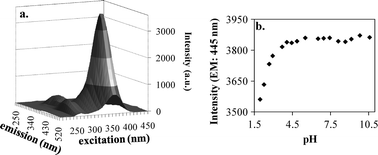Biological activity and coordination modes of copper(ii) complexes of Schiff base-derived coumarin ligands†
Abstract
The coordination modes of

Maintenance work is planned for Wednesday 1st May 2024 from 9:00am to 11:00am (BST).
During this time, the performance of our website may be affected - searches may run slowly and some pages may be temporarily unavailable. If this happens, please try refreshing your web browser or try waiting two to three minutes before trying again.
We apologise for any inconvenience this might cause and thank you for your patience.
* Corresponding authors
a Department of Science, Institute of Technology Tallaght, Dublin 24, Ireland
b Centre for Applied Science and Health, Institute of Technology Tallaght, Dublin 24, Ireland
c Department of Inorganic and Analytical Chemistry, University of Szeged, Szeged, Hungary
d The Inorganic Pharmaceutical and Biomimetic Research Group, Focas Institute, Dublin 2, Ireland
e Chemical Research Center, Institute of Structural Chemistry, Hungarian Academy of Sciences, Budapest, Hungary
f Department of Physical Chemistry and Materials Sciences, University of Szeged, Szeged, Hungary
g Department of Chemistry, University of Otago, P.O. Box 56, Dunedin, New Zealand
The coordination modes of

 Please wait while we load your content...
Something went wrong. Try again?
Please wait while we load your content...
Something went wrong. Try again?
B. S. Creaven, E. Czeglédi, M. Devereux, É. A. Enyedy, A. Foltyn-Arfa Kia, D. Karcz, A. Kellett, S. McClean, N. V. Nagy, A. Noble, A. Rockenbauer, T. Szabó-Plánka and M. Walsh, Dalton Trans., 2010, 39, 10854 DOI: 10.1039/C0DT00068J
To request permission to reproduce material from this article, please go to the Copyright Clearance Center request page.
If you are an author contributing to an RSC publication, you do not need to request permission provided correct acknowledgement is given.
If you are the author of this article, you do not need to request permission to reproduce figures and diagrams provided correct acknowledgement is given. If you want to reproduce the whole article in a third-party publication (excluding your thesis/dissertation for which permission is not required) please go to the Copyright Clearance Center request page.
Read more about how to correctly acknowledge RSC content.
 Fetching data from CrossRef.
Fetching data from CrossRef.
This may take some time to load.
Loading related content
